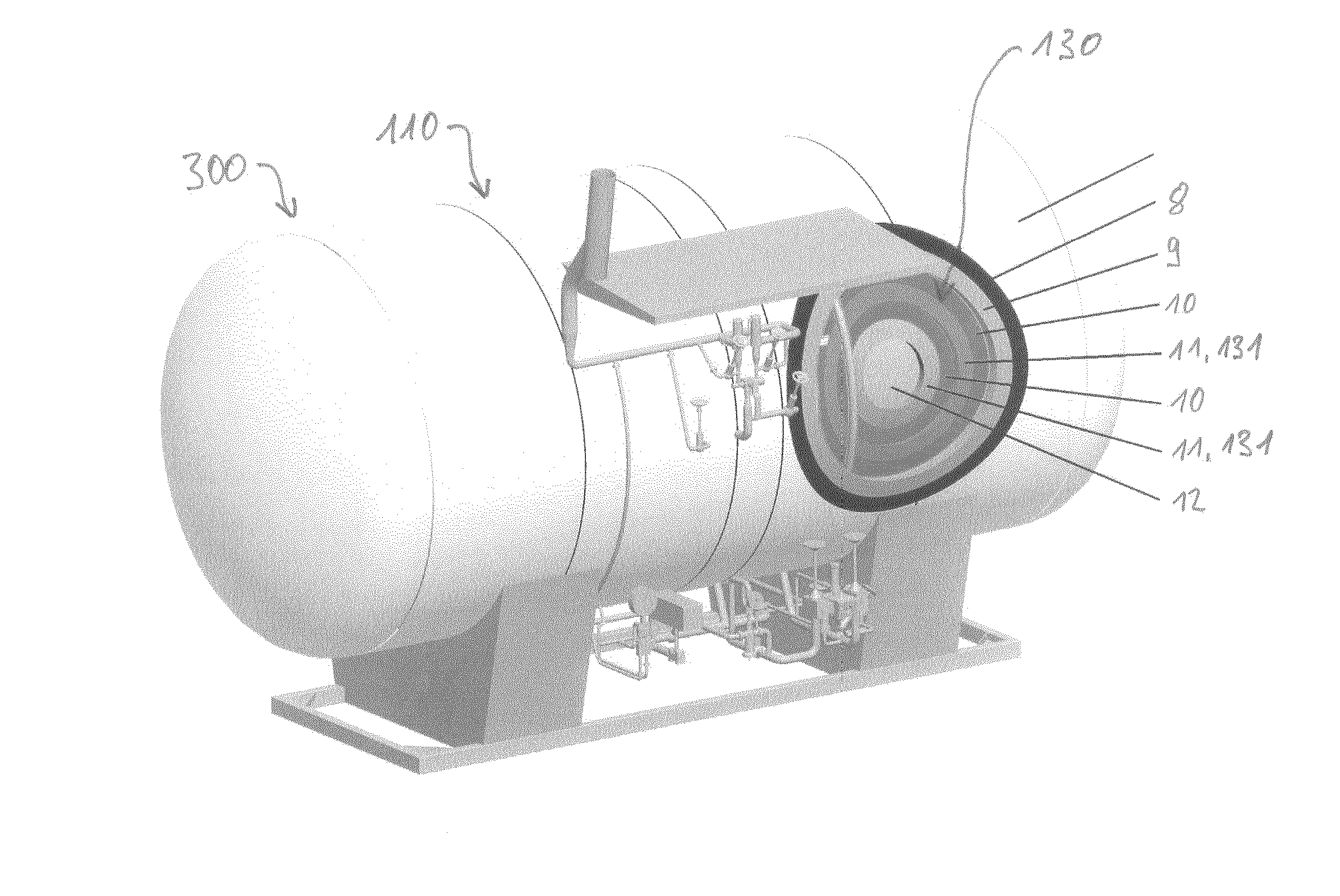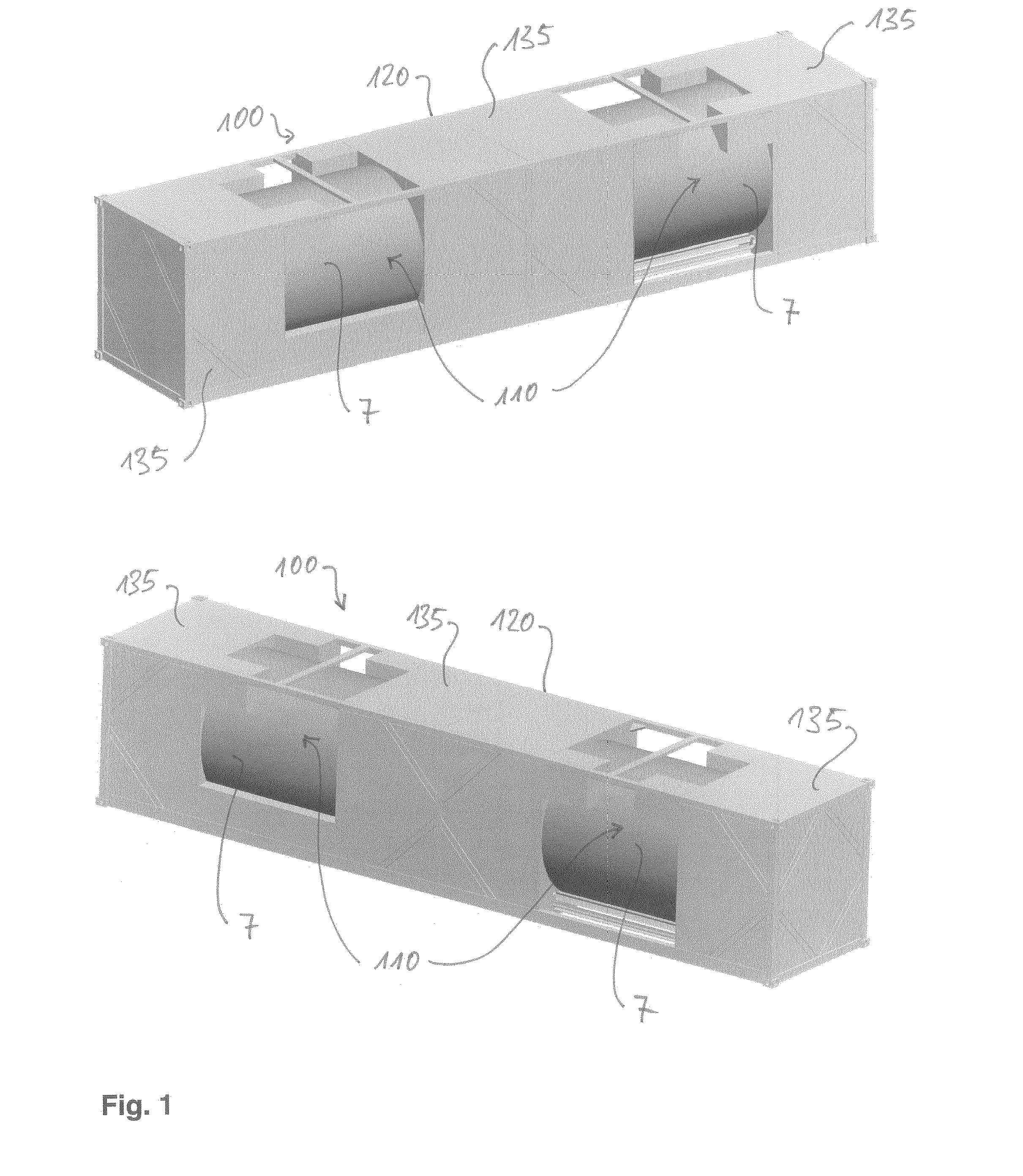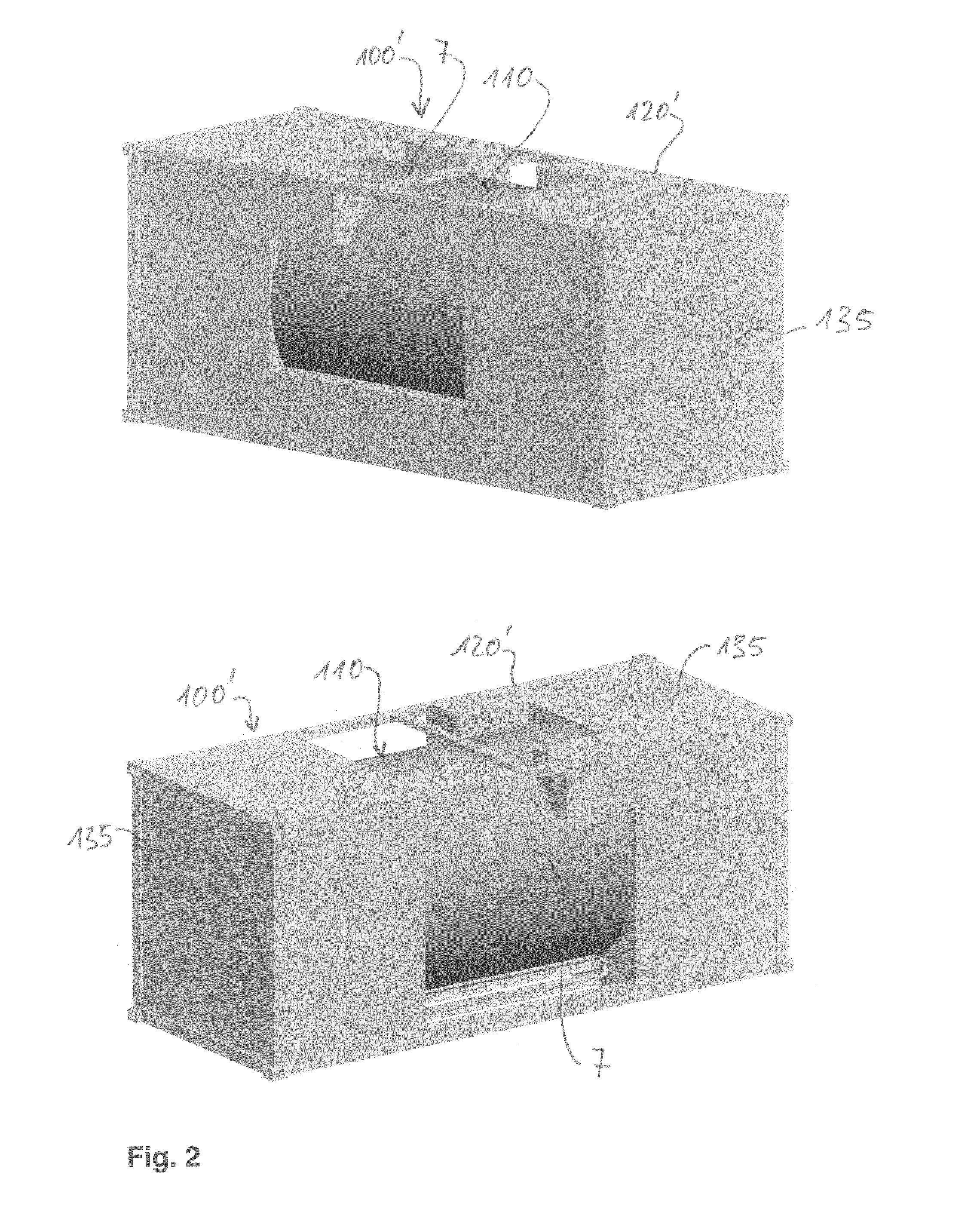Tank container for transport and storage of cryogenic liquefied gases
a technology for cryogenic liquefied gas and tank containers, which is applied in the direction of transportation and packaging, container discharging methods, and container filling under pressure, etc., can solve the problems of capital intensive expansion of gas pipeline networks, high capital expenditure on gas pipeline construction, and low vacuum for traditional cryogenic tank insulation to achieve the effect of low maintenance, high transport capacity and low tare weigh
- Summary
- Abstract
- Description
- Claims
- Application Information
AI Technical Summary
Benefits of technology
Problems solved by technology
Method used
Image
Examples
implementation case 1
[0039]>>Intermodal100 CRYOTAINER 34000 LNG / 40′ (FIG. 1) is intended for the long range transportation of liquefied natural gas and is assembled of two horizontal vessels 110 of 16.800 liter clamped into a standard frame 120 for a 40-foot (˜12 m long; in the following text as 40′) container.
[0040]Each pressure vessel 110 is horizontally embedded in the standard ISO 40′ container frame 120′. The pressure vessel 110 is defined of an internal shell 12 which is covered by an external insulation coating formed by a cover sheet 7. The space between shell 12 and coating 7 is filled with an 7 insulation arrangement 130 comprising a combination of insulating materials. (FIG. 7a, FIG. 7b). The insulation arrangement 130 from the inside towards the outside consists of at least one (two according to FIG. 7b) set 131s of several (five with a thickness of 10-mm, as indicated in FIG. 7b) nanostructure insulation layers 11 of cryogenic insulation based on an aerogel composition (total 100 mm). In th...
implementation case 2
[0056]Intermodal unit CRYOTAINER 16800 LNG / 20′ (FIGS. 2 and 5) is intended for local transport of liquefied natural gas and is composed of a horizontal vessel 110 of 16.800 liter volume clamped into a standard 20-foot (some 6 m; vas 20′ in the following text) frame 120′.
[0057]Pressure vessel 110 is horizontally embedded in the standard ISO 40′ container frame 120′. All 5 further features and embodiments of the insulation arrangement 130, supports 30 and the saddle structure 121 described above in connection with implementation case 1 also apply to the tank container 100′ with a single vessel 110 according to implementation case 2 (FIGS. 2 and 5).
implementation case 3
[0058]The vertical stationary pressure vessel 200 CARD 8600 LNG (FIG. 3) is intended for storage and distribution of liquefied natural gas. The volume of the vessel is 8.600 liter (the family extends from 8.600 to 15.000 liter). This vessel presents a cost effective alternative to local supply of customers on low population density areas, where a pipeline solution would prove not feasible due to high capital involvement. The use of liquefied natural gas in supply of medium and small consumers can present an option also for the supply of vehicles in traffic where it is one of the cleanest and environmentally most favorable solutions. All further features and embodiments of the insulation 130 described above in connection with implementation cases 1 and 2 also apply to the vertical stationary vessel 200 according to implementation case 3.
PUM
| Property | Measurement | Unit |
|---|---|---|
| temperature | aaaaa | aaaaa |
| temperatures | aaaaa | aaaaa |
| temperatures | aaaaa | aaaaa |
Abstract
Description
Claims
Application Information
 Login to View More
Login to View More - R&D
- Intellectual Property
- Life Sciences
- Materials
- Tech Scout
- Unparalleled Data Quality
- Higher Quality Content
- 60% Fewer Hallucinations
Browse by: Latest US Patents, China's latest patents, Technical Efficacy Thesaurus, Application Domain, Technology Topic, Popular Technical Reports.
© 2025 PatSnap. All rights reserved.Legal|Privacy policy|Modern Slavery Act Transparency Statement|Sitemap|About US| Contact US: help@patsnap.com



